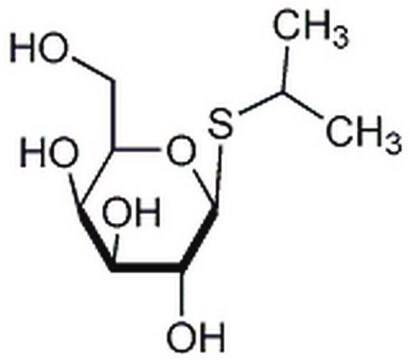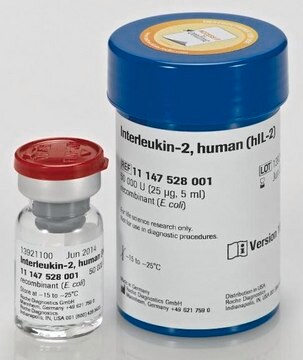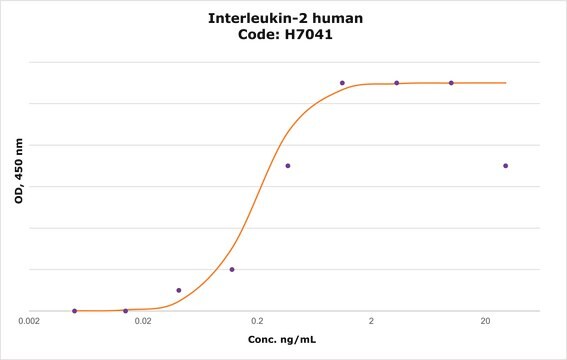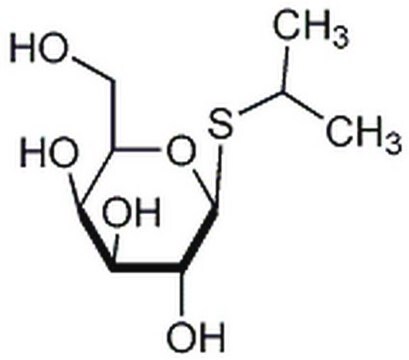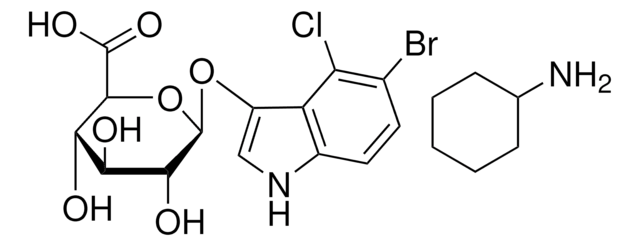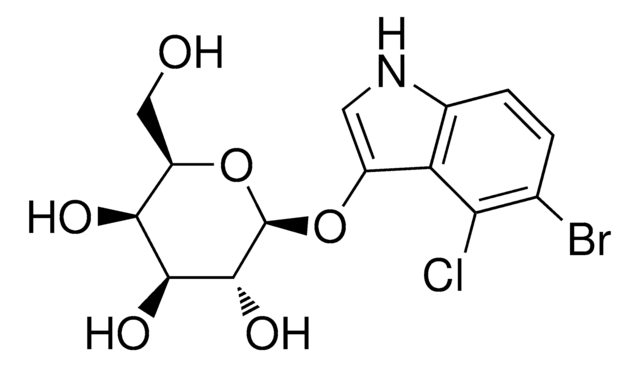I1284
Isopropyl β-D-thiogalactopyranoside solution
ReadyMade IPTG solution for Blue-white screening
Synonyme(s) :
IPTG solution
About This Item
Produits recommandés
Qualité
for molecular biology
Niveau de qualité
Description
non-ionic
Forme
liquid
Poids mol.
238.3
Conditions d'expédition
dry ice
Température de stockage
−20°C
Chaîne SMILES
CC(C)S[C@@H]1O[C@H](CO)[C@H](O)[C@H](O)[C@H]1O
InChI
1S/C9H18O5S/c1-4(2)15-9-8(13)7(12)6(11)5(3-10)14-9/h4-13H,3H2,1-2H3/t5-,6+,7+,8-,9+/m1/s1
Clé InChI
BPHPUYQFMNQIOC-NXRLNHOXSA-N
Description générale
Application
- used as an inducer for the expression of single domain antibodies(sdAbs) in E coli and bioactive peptides
- used in its half-life and decay studies
- suitable for induction of recombinant protein expression in systems controlled by the lac repressor
Actions biochimiques/physiologiques
Principe
Produit(s) apparenté(s)
Code de la classe de stockage
10 - Combustible liquids
Classe de danger pour l'eau (WGK)
WGK 2
Point d'éclair (°F)
Not applicable
Point d'éclair (°C)
Not applicable
Équipement de protection individuelle
Eyeshields, Gloves, multi-purpose combination respirator cartridge (US)
Faites votre choix parmi les versions les plus récentes :
Déjà en possession de ce produit ?
Retrouvez la documentation relative aux produits que vous avez récemment achetés dans la Bibliothèque de documents.
Les clients ont également consulté
Notre équipe de scientifiques dispose d'une expérience dans tous les secteurs de la recherche, notamment en sciences de la vie, science des matériaux, synthèse chimique, chromatographie, analyse et dans de nombreux autres domaines..
Contacter notre Service technique
